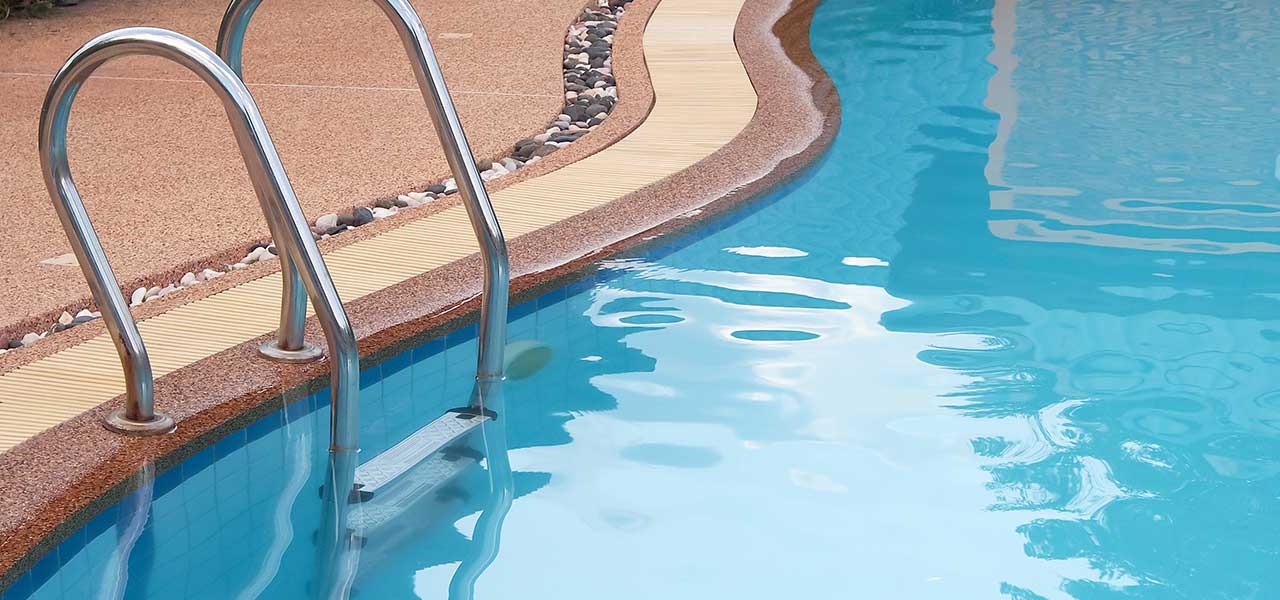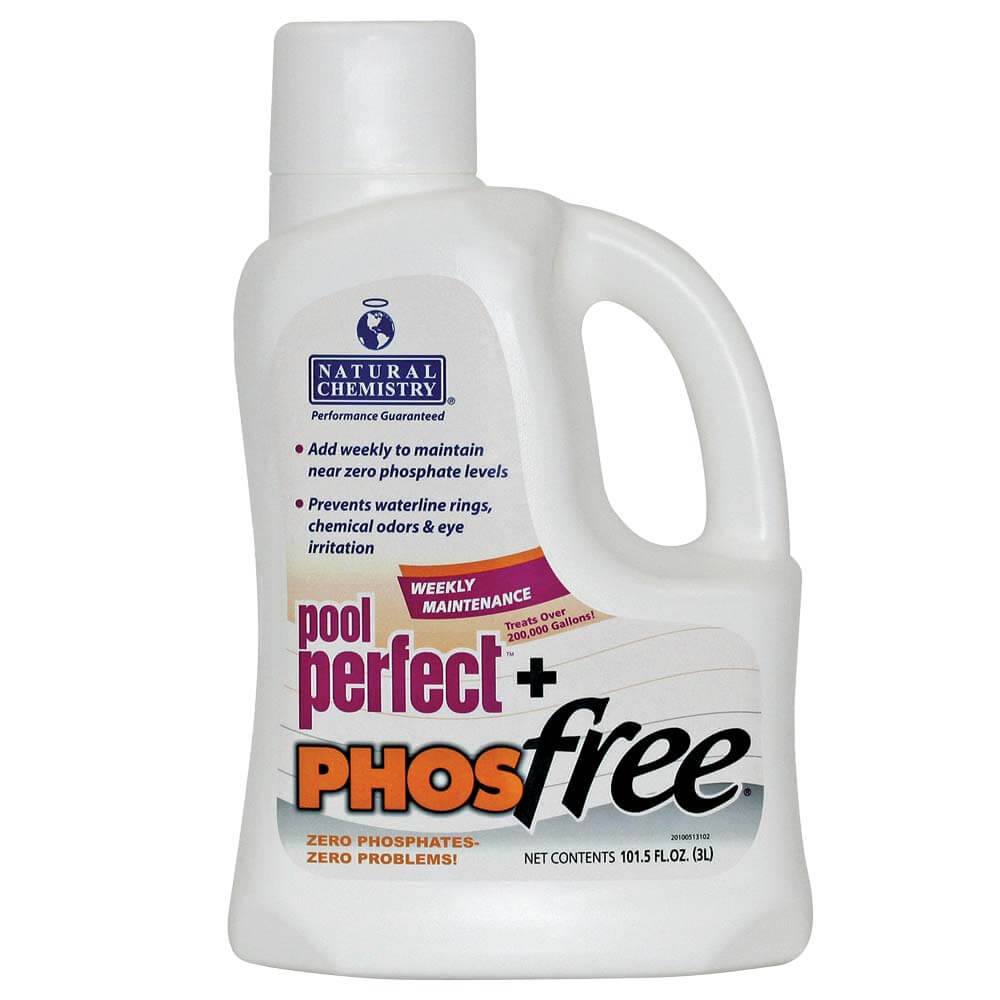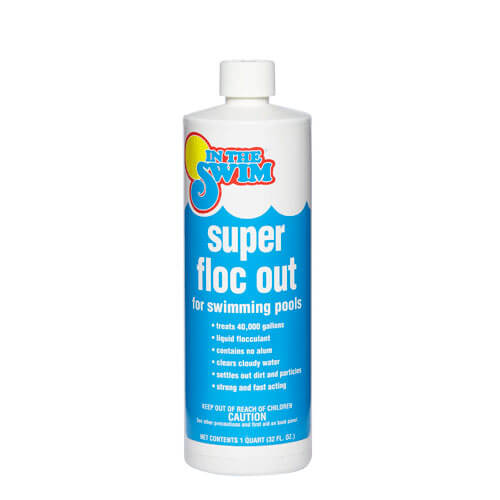FREE Standard Shipping On All Orders $100 or More!*

The Ultimate Guide to Pool Clarifiers
Owning a swimming pool comes with responsibility, such as maintaining clean and clear water. Not only will this make your pool’s aesthetic more attractive, but it also keeps swimmers away from unwanted bacteria and other elements. Lucky for you, there are several ways to keep a swimming pool clean and balanced. One of the best ways is by using a pool clarifier. You might be asking, “What’s a pool clarifier and how does it work?” You’ve come to the right spot!
In this guide, we’ll go over everything you need to know about pool clarifiers and how it contributes to clean and healthy water.
How Do They Work?
Pool clarifiers are polymers that act as coagulants on suspended particles in the water. Specifically, clarifiers impart cations or positively charged ions to the pool, which are attracted to negatively charged suspended particles.
Opposites attract, and when adding a clarifier to a pool, the positive (+) polymer molecules immediately bond with the negative (-) particles that make pool water cloudy. As attraction continues, the particle quickly grows from microscopic size to a larger clump that can be removed by your pool filter.
There's an important distinction to make. Most pool clarifiers do not destroy particulate matter or consume colloidals; they simply gather them up in larger and larger clumps to a size that won't pass through your pool filter. A properly operating pool filter is of paramount importance, to a clarifier's success.
What Are They?

The most common type of pool clarifier chemical sold and used is known as a PolyDADMAC, an ammonium chloride with a highly positive charge density. Different concentrations of 10% to 40% are useful for nearly any negatively charged colloidal particles.
Another natural chemical used as a pool clarifier are enzymes, positively charged particles that actually do consume organic and inorganic colloids or suspended material. This is especially useful for oils and organics.
A group of clarifying agents known as polyacrylamides, or PAM, makes another fine ionic polymer. For pools, you'll find these packaged in the form of a Gel Cube, which is long-lasting and easy to use. However, it's not recommended to use in cartridge or D.E. filters, as the gel can clog the fine pores of their filters.
And there are Aluminum Sulfate products, called simply Alum by those in the know. Alum is used as a flocculant, as it can clog pool filters. After adding a pool floc product the filter is shut off to allow the heavy particles to sink to the pool floor, usually overnight. A slow vacuuming to waste the following day will expel the gel-like material, which has the consistency of wet toilet paper.
Finally, we have blended clarifiers, which are formulations that contain mixtures of polymer ions, chitosan, enzymes, phosphate removers, or sulfates of alum. Multipurpose blends solve several problems at once. These will usually have higher prices, as they contain several pricey ingredients.
When Should Pool Clarifiers Be Used?

Pool clarifiers are not meant to be used all season long, but are quite helpful at pool opening after an algae bloom, or battles with cloudy pool water.
Follow label directions, but most pools can be retreated after 5-7 days, with a lower dosage than initially used. When clearing turbid water conditions, remember to keep your pool water balanced properly and run your pool filter nearly 24 hours daily.
Be careful not to overdose pool clarifiers, especially if you also use a metal sequestrant product in your pool. Too much clarifier in the pool can act as a dispersant instead of a coagulant, compounding your water problems!
Why Are Pool Clarifiers Needed?
It's not uncommon to have cloudy water upon opening the pool, after an algae bloom, or as a result of reduced filtering or chlorinating. However, if you need to use a clarifier regularly to maintain water quality, it could point to other problems. You may have an undersized or worn pool filter, ineffective pool sanitation, and/or poor water balance.
High pH, low chlorine, high TDS, high calcium hardness, high alkalinity, high cyanuric acid - all can lead to cloudy pool water when conditions are right.
Poor filtration, poor circulation, and poor sanitation can also lead to poor pool water clarity. It could be that your pool filter is too small, or that the filter media (sand, cartridge, or grids) need replacement, or perhaps you are just not running the filter long enough each day. Filtration needs change throughout the season, more is needed during hot weather and active pool use.

Pool Flocculants or Clarifiers?
The terms are sometimes used interchangeably in other industries, but for swimming pools and spas, a flocculant will attract suspended particles to itself, resulting in marble-sized clumps that sink slowly to the bottom of the pool. The filter pump remains off during treatment, and after 8-12 hours a thick white carpet needs to be slowly vacuumed - to waste.
Clarifiers, on the other hand, work with your filter to trap visible and invisible particles floating in the water. Some particles may settle out, but most do not become heavy enough to sink. Instead they are drawn into the filter with constant circulation during treatment.
Tips on Using Pool Clarifiers
- Read and follow label instructions exactly, in regards to pool water balance requirements, correct dosage, application method and pool filtration following treatment.
- Overdosing the pool with polymer clarifiers can change the charge of the suspended particles from negative (-) to positive (+), resulting in increased water turbidity.
- If pool clarity problems began with an algae bloom, be sure to kill algae before clarifier treatment. This requires 10-30 ppm of chlorine, with a suitably low pH of around 7.2.
- Operate the filter 24 hours per day during treatment, or as long as possible each day and night to improve circulation and filtration.
- Resist the urge to over-clean the filter. Backwash or clean the filter only when the pressure gauge has risen 7-9 lbs.
- Maintain proper water balance and chlorine levels following treatment. Some clarifiers may increase pool pH levels.